
The AKC National Championship presented by Royal Canin will take place Saturday and Sunday, December 15 & 16, 2018, in Orlando, Florida. Tune in to AKC.TV, or download the AKC.TV app on Roku, Apple TV, orAmazonFireTV to catch the live stream starting on Saturday, December 15 at 12 p.m. ET. Watch the TV premiere on New Year’s Day on Animal Planet at 6 p.m. ET. Encore performance airs at 12 a.m. ET.
Agility may seem like the perfect sport for breeds like the whip-smart Border Collie, but have you ever wondered if your dog can participate too? It may come as a surprise, but any breed or mixed breed can get in the game, and agility is just as all-inclusive for people as it is for dogs. Meet five competitors – all of whom have earned a place in the AKC Agility Invitational at the upcoming AKC National Championship – who will convince you that you and your dog can do agility too.
Senior Dog and Senior Handler
Sixty-eight-year-old Margaret Jewett and her senior dog, Dakota, prove that age isn’t a barrier to agility success. Dakota is a 10-year-old Pointer and Margaret’s first agility dog. Margaret remembers attending an intro class nine years ago and being immediately hooked with how much fun she was having.
Now that Dakota is older, he’s a little slower out of the gate. Plus, at 68, Margaret says she has slowed down a bit too. “I’m not a very fast runner, so that makes it harder to get places.”
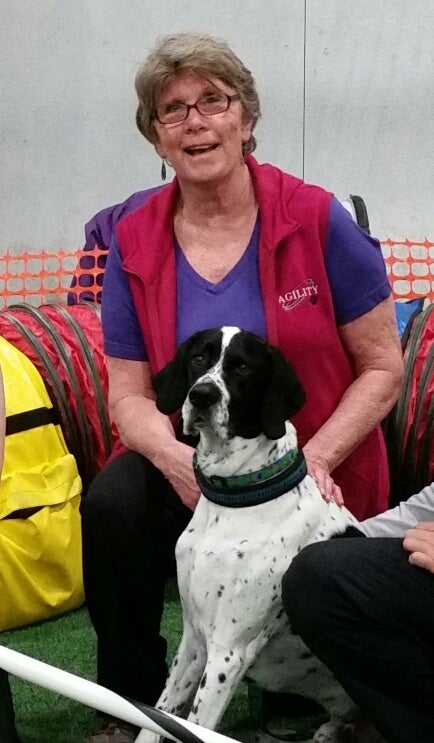
Margaret welcomes other senior dogs and handlers to the sport but advises keeping it fun and letting the older dog set the pace. “Don’t think you have to run and handle like a seasoned and/or younger team. You and your dog are winners every time you step on a course together.”
Partially Blind Dog is Going the Distance
When agility instructor Kim Seiter’s Mudi, Komoly, began acting differently on the course, Kim thought he was simply not paying attention. Soon after, she noticed Komoly’s left pupil wasn’t constricting properly. A visit to a veterinary ophthalmologist confirmed Komoly’s left retina was completely detached.
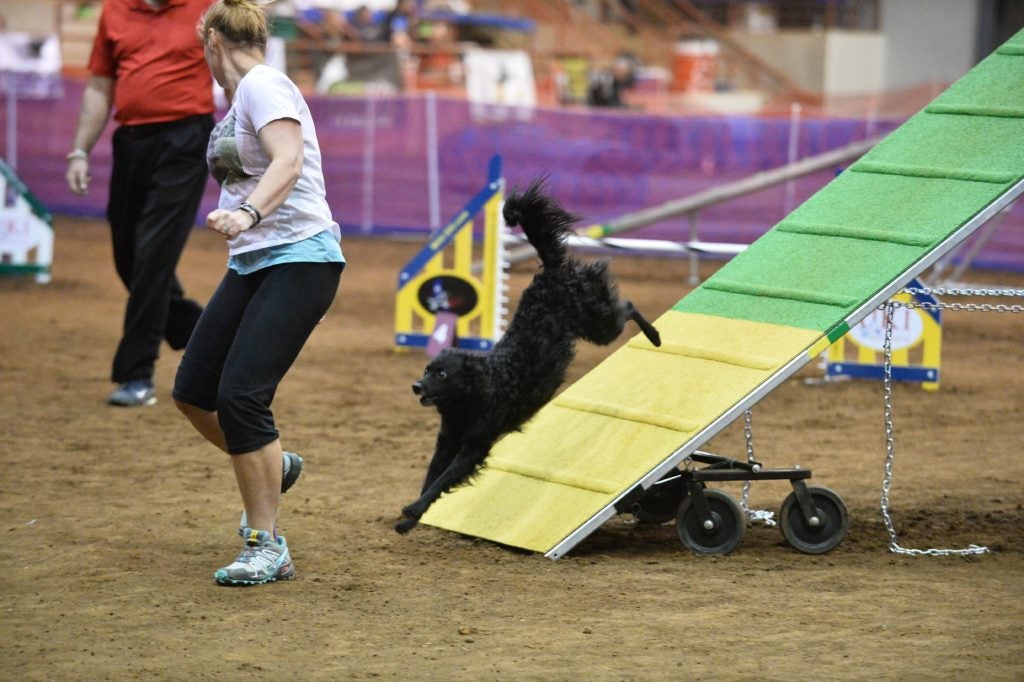
Despite Komoly’s partial blindness, he and Kim still achieved the number two position for his breed in qualifying for the AKC Agility Invitational. Their biggest challenge is that Komoly doesn’t get all the information he used to. So Kim tries to look at courses from her dog’s perspective, to help him based on what he can or can’t see.
Kim advises anybody involved in agility that it’s the challenges you learn from the most. “Komoly was really at the best point in his agility career when this happened. But our ability to work together and our years of developing trust in each other has made us a better team than before.”
Basset Hound Wows the Crowd
The Basset Hound might be one of the last breeds you would expect to see on the agility course, but Vicki LePenske and her five-year-old Basset Hound, Darcy, will defy your expectations. “Usually Darcy is the only Basset competing in the whole of Southern California. She has quite the cheering section!” says Vicki.
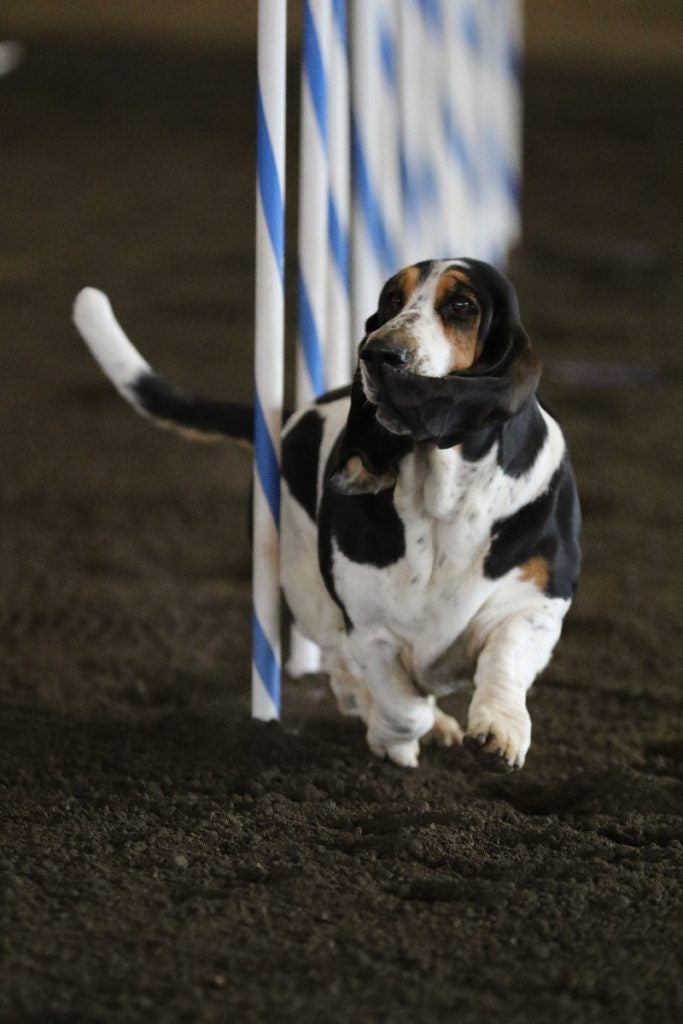
Darcy’s stubby legs carry large feet and a large body, which makes some obstacles more challenging for her. For example, the weave poles. Vicki explains, “Due to their little legs, it is difficult to do the weaves at any kind of speed as they can’t get the body wiggle going very fast. The nose is in pole three and the rear is coming out of pole one!”
Vicki’s advice to other Basset owners is that not every breed will breeze through the levels, but it’s all about having fun and spending time with your dog. “Don’t let their size and body type fool you. These dogs can move fast and be agile when they put their minds to it.”
Overcoming Life-Threatening Injuries
When Doozie was severely attacked by another dog during an evacuation from Hurricane Harvey, Susan Wey didn’t think her Gordon Setter would survive. Because of extreme flooding, it was three days before she was able to get Doozie to a vet.
Susan knew Doozie’s agility career might be over. “We needed to see how she healed, what her range of motion was going to be. And probably more importantly for her, what her mental state around other dogs was going to be after such a horrific attack.” But she started building Doozie’s strength and flexibility. Four months later, both were back at an agility trial.
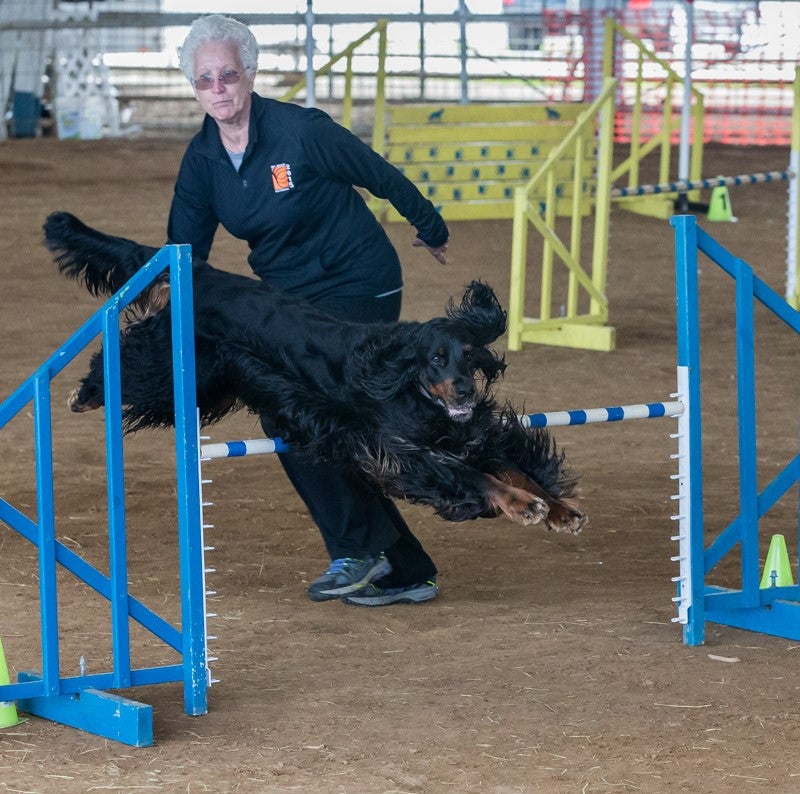
Although the attack has made her wary of other dogs, once Doozie starts her run, she is faster and runs with more joy than ever before. “It’s as if she knows her agility life was almost cut short, so she’s enjoying it while she can,” says Susan.
Susan has overcome her own health issues too. The 67-year-old with two artificial knees believes, “If Doozie and I can do it, so can anyone else. If they are determined like we are.”
Conquering Anxiety
Tracy Brainard’s Greater Swiss Mountain Dog, Ollie, tore a tendon in her rear leg at one year of age. Months later, Ollie tore the same tendon in her other hind leg. Tracy explains that months of casts and rehab took a toll on Ollie’s spirit. “This once confident, very happy puppy, began to have stress and anxiety.”
Tracy tried everything she could to build Ollie’s confidence – including agility – because Ollie was happy when she was working and learning. But at their first competition, Ollie was so stressed that she tore through the course like a tornado, knocking over the jump uprights and bringing the entire tire to the ground. Plus, she became frustrated, barking in Tracy’s face and biting her.
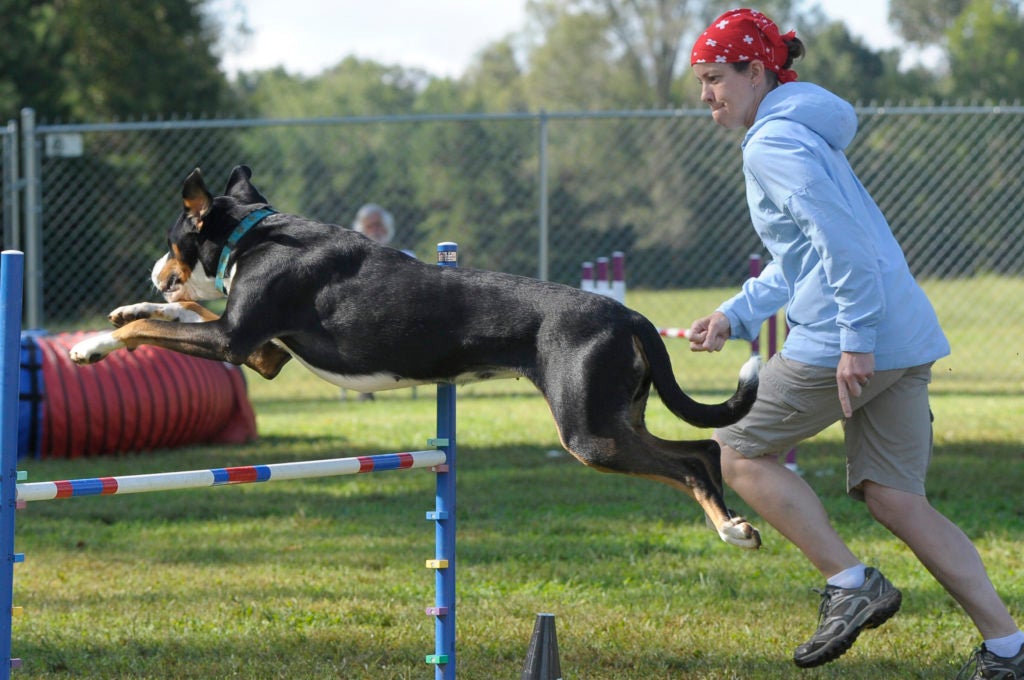
Seven years later, Ollie is still anxious, but she has come a long way. “She is just not reactive at the trials anymore. Her confidence has increased so much and she honestly runs with a giant smile on her face,” Tracy says. She credits time, training, and patience for their success, but says agility is responsible for giving Ollie the confidence to go out in public without being scared.
Tracy encourages people not to give up or get too frustrated. “It’s not about the titles and ribbons, but about the journey you will have along the way… And above all, have the best fun you can with your dog.”
If these inspiring teams could face their challenges and succeed, then anyone can give agility a try. It’s an all-inclusive sport with a warm and welcoming community. Before starting, be sure to get your veterinarian’s okay.

